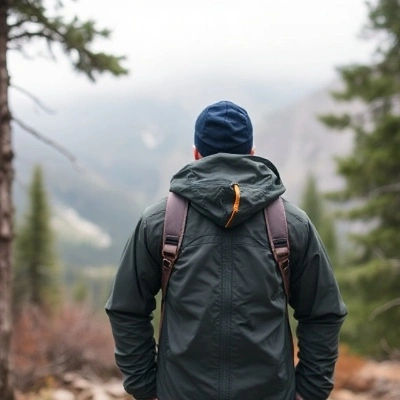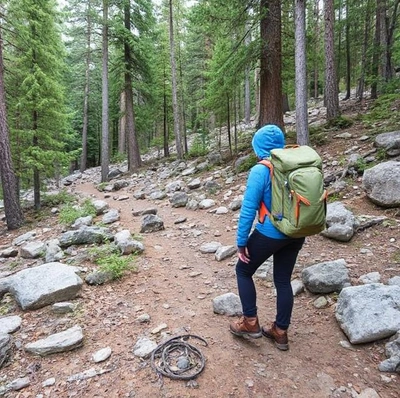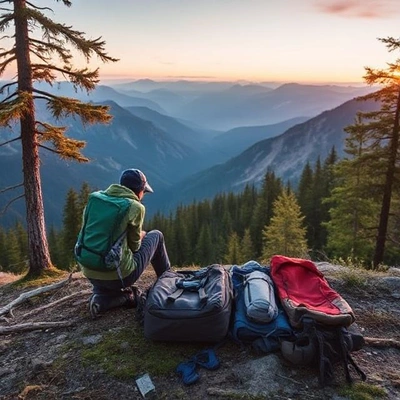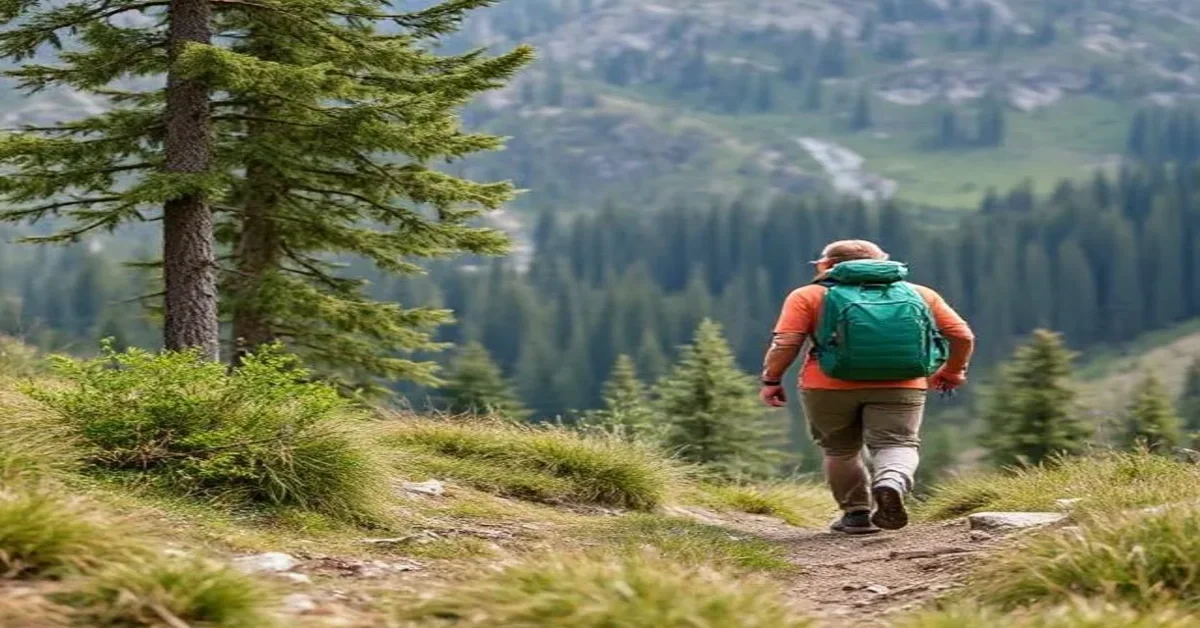When choosing what clothes to wear for hiking, go for light, moisture-wicking layers, quick-dry shirts, durable pants, and strong hiking boots. Add a hat, quality socks, and a lightweight waterproof jacket for comfort, protection, and safe outdoor adventures.
This guide will help you understand the best clothes to wear for a hike, covering different weather conditions, types of hikes, and key clothing layers.
Table of Contents
Why Proper Hiking Clothing is Important
Clothing plays a key role in keeping you comfortable and protected while hiking. Wearing a jacket helps you maintain body temperature, avoid injuries such as friction, and protect against the elements. Wearing the wrong clothes can lead to discomfort, stress, or even safety issues during your hike.
Key Considerations When Choosing Hiking Clothes
Before you hit the trail, consider these factors to select the right clothes:
- Weather: Choose clothes based on the expected weather conditions.
- Terrain: Hiking on rough terrain calls for durable and protective clothing.
- Duration: Longer hikes may require more layers and moisture-wicking fabrics.
- Movement: Opt for flexible, breathable clothes that allow for ease of movement.
Essential Hiking Clothing Layers

Layering is the best method for regulating body temperature and dealing with changing weather conditions on a hike. Here’s a breakdown of the essential layers:
1. Base Layer
The base layer is crucial for drawing moisture away from your skin, keeping you dry and comfortable. Materials like merino wool and synthetic fabrics work best. Avoid cotton, as it traps moisture and can lead to chafing.
- Best Materials: Merino wool, polyester, nylon
- Examples: Moisture-wicking t-shirts, long-sleeve tops, leggings
2. Mid Layer
The mid-layer helps retain body heat. This layer should be breathable and capable of keeping you warm during colder hikes. Fleece or insulated jackets are great options for this layer.
- Best Materials: Fleece, down, artificial insulation
- Examples: Fleece jackets, insulated vests, pullovers
3. Outer Layer
The outer layer protects you from wind, rain, and snow. This layer should be waterproof, lightweight, and breathable. The system is easy to add or remove depending on changing conditions.
- Best Materials: Gore-Tex, nylon, polyester
- Examples: Waterproof jackets, windbreakers, rain pants
Best Shoes for Hiking
Footwear is one of the most critical elements of your hiking outfit. You need shoes that are both supportive and comfortable, and suitable for the environment.
- For Rugged Terrain: Strong hiking boots with ankle support.
- For Light Hikes: Trail runners or lightweight hiking shoes.
- For Wet Conditions: Waterproof boots or shoes to keep your feet dry.
What to Wear for Different Weather Conditions
Choosing the right clothes based on weather conditions is essential for a comfortable hike.
Cold Weather Hiking
Layering becomes even more important in colder conditions. Ensure you wear insulated layers to stay warm and a waterproof outer layer to protect against wind or snow.
- Base Layer: Thermal tops and bottoms.
- Mid Layer: Fleece or down jacket.
- Outer Layer: Waterproof, windproof jacket and pants.
Hot Weather Hiking
In hot weather, wear lightweight, airy clothes that allow air to circulate and wick moisture. Lighter-coloured clothing helps reflect the sun’s rays, keeping you cool.
- Base Layer: Lightweight moisture-wicking shirt and shorts.
- Outer Layer: A lightweight, breathable jacket for sun protection.
Rainy Weather Hiking
Rain protection is essential when hiking in wet conditions. Choose waterproof clothing that also allows for airflow to prevent overheating.
- Base Layer: Moisture-wicking clothes to keep you dry.
- Outer Layer: Waterproof jacket and pants made of lightweight materials like Gore-Tex.
- Footwear: Waterproof boots to keep your feet dry.
What to Wear for Multi-Day Hikes

For longer treks, your clothing should be durable, versatile, and lightweight. Quick-drying fabrics are ideal, as they allow for easy washing and drying during your hike.
- Base Layer: Quick-drying clothes for comfort and freshness.
- Mid Layer: Warm jacket that packs down small for portability.
- Outer Layer: A waterproof, breathable jacket for changing weather conditions.
What to Wear on Your Head and Hands
Protection from the sun, wind, and cold is essential for your head and hands.
- Hat: A wide-brimmed hat for sun protection or a warm beanie for cold weather.
- Sunglasses: To protect your eyes from UV rays.
- Gloves: Lightweight gloves for cold weather, or fingerless gloves for more dexterity.
Hiking Accessories You Should Pack
In addition to clothing, these accessories can improve your comfort:
- Socks: Choose moisture-wicking socks to avoid blisters.
- Backpack: A lightweight daypack for carrying essentials.
- Sun Protection: Sunscreen and lip balm with SPF to protect against sunburn.
Packing Tips for Hiking Clothes

When packing for your hike, focus on essentials and practicality:
- Pack Light: Avoid overpacking, bring only what you need.
- Choose Multi-Use Clothing: Opt for clothes that serve multiple purposes.
- Roll Clothes: Rolling clothes saves space and reduces wrinkles.
How to Choose the Right Hiking Clothes for Your Body Type
Different body types require different fits. Opt for clothing that offers movement, comfort, and breathability. Choose clothing that moves with you, and for plus-size hikers, ensure there’s enough room for comfort and proper fit.
FAQs:
1. What clothes should I wear for a short hike?
For a short hike, wear lightweight moisture-wicking clothes, comfortable shoes, and pack a light jacket in case of changing weather.
2. Can I wear jeans for hiking?
Jeans are not ideal for hiking as they trap moisture and cause discomfort. Opt for flexible, moisture-wicking pants instead.
3. How do I prevent blisters while hiking?
Wear moisture-wicking socks, and make sure your shoes fit well. Avoid cotton socks, as they retain moisture and increase friction.
4. What kind of jacket is best for hiking?
A waterproof, breathable jacket made from materials like Gore-Tex is ideal for hiking. It will keep you dry without making you overheat.
5. How should I layer clothes for a winter hike?
Layer with a moisture-wicking base layer, an insulating mid-layer like fleece, and a waterproof outer layer to protect against wind and snow.
Conclusion:
Wearing the right clothes for hiking is key to ensuring your comfort and safety on the trail. Layering is essential, as it enables you to adjust your clothing according to the weather and exertion levels. Whether hiking in hot or cold weather, choosing moisture-wicking, breathable, and protective clothing will ensure a successful and enjoyable hike.




Join The Discussion